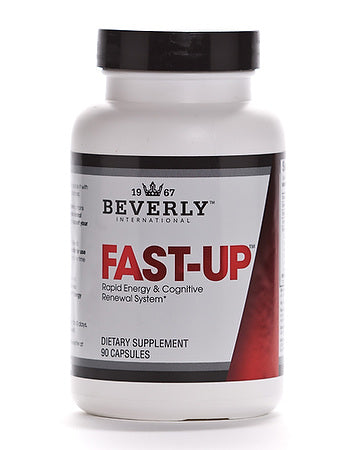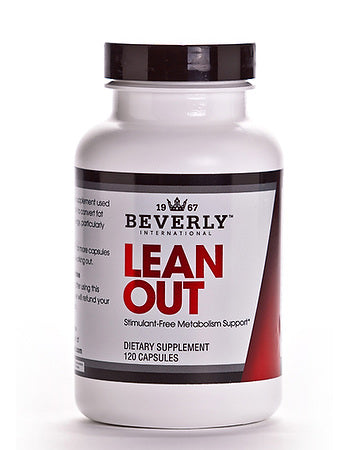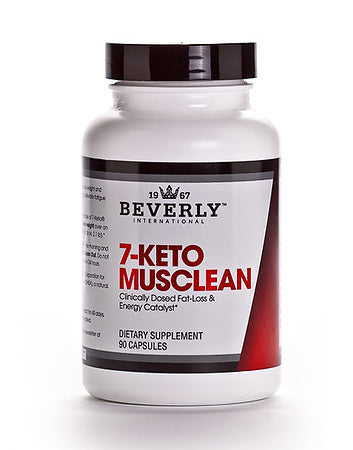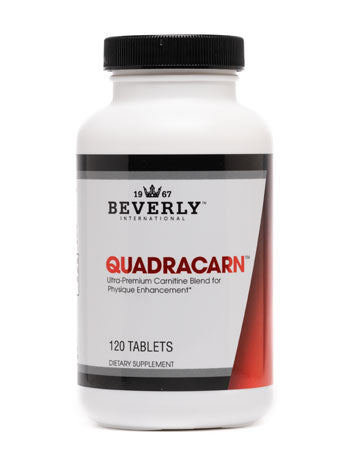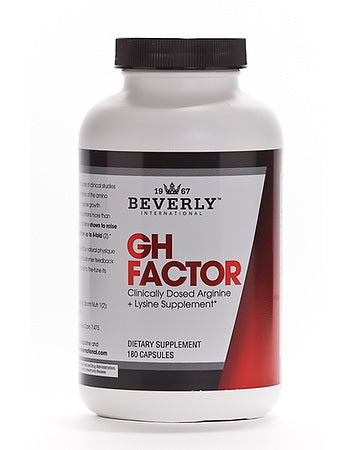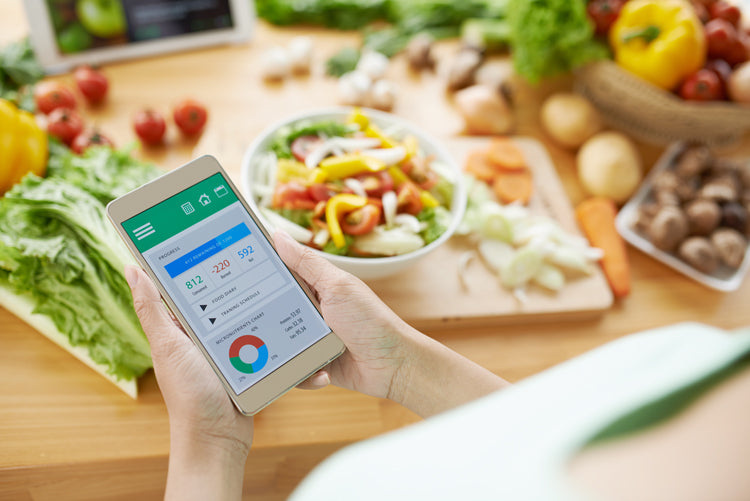
Is Counting Calories Effective?
Many of us have at least heard of ‘calorie counting’ or some form of logging your food. It’s a way to eat more/less calories by tracking (counting) the foods and drinks you eat throughout the day either on an app or in a written log. While it's been done for years in various forms (Weight Watchers, Noom, MyFitness Pal, Lose It...etc) it's easy to think it's too simple to work.
Does it actually help you reach your goal of fat loss or muscle gain and building?

The Basics
What are calories really?
A calorie is essentially a measurement unit energy. It's defined as the energy needed to raise the temperature of 1 g of water by 1 °C. When we’re talking about ‘food calories’ we are actually talking about kilocalories (kcal). 1kcal = 1000 calories.A kilocalorie can also be written as Calorie (capitalising the “C”). Ok, Ok, I know – it feels like you're back in chemistry class! We'll break it down quickly then move on to the meat of the matter. Pardon the pun. :D
1000 calorie (cal) = 1 Calorie/kilocalorie (kcal)
Our bodies need energy to operate and function in daily life, that’s why calories are so important. Just like a car needs gasoline, your body needs a caloric supply. Keeping track of calorie intake is not always easy, but simple tools and rules will allow you to utilize this method to achieve unreal and fast results.
Background
While there have been many methods to count calories and determine what foods/drinks account for them, a man named Wilbur Olin Atwater was a pioneer in the early 1900's who developed a way to measure the calorie content of foods. It’s called the Atwater system, aptly named, and it’s still used today. While it's not 100% accurate...it's a lot more accurate than when people "guess" how many calories are in that BigMac burger without any guidance like the Atwater system. (For reference, just 20 years ago, I had no idea what my caloric intake was and always assumed I just needed to work out, do some ab crunches to lose weight. I've learned a lot since then...it's knowing what you didn't know that makes all the difference)The Atwater System's Basic Breakdown of Macronutrients
1g of fat = 9kcal
1g of alcohol = 7kcal
1g of carbohydrate = 4kcal
1g of protein = 4kcal
So 100g of butter (which is mostly fats) will contain more calories than 100g of milled oats (which is mostly carbohydrates). Fiber is not accounted for in the Atwater system but because it’s not digested as well as other carbohydrates, it’s usually assumed 1g of fiber = 2kcal. The net calories are often 0 as the energy it takes to break them down is often equal to the fiber calorie content.
While the Atwater system gives us an understanding of how macronutrients are accounted for, we need a caloric base to build a plan that helps us lose fat, maintain physique or build muscle / gain weight. One way to determine your caloric needs is found here.
Why would you count calories?
The concept of calorie counting exists because calorie intake is person-specific. Caloric expenditure and needs vary from person to person. ‘Needs’ is defined roughly as the amount of calories someone needs to maintain a weight or body composition. If someone is eating fewer calories than they need, they’re in what’s called a calorie deficit and will lose weight. If someone is eating more calories than they need, they’re in a calorie surplus and will gain weight.So why count calories? Well, it is likely a person is counting calories because they’re trying to eliminate weight gain, as excess calories are normally stored in the body as fat. Alternatively, someone very active like an athlete might want to count calories to track progress of muscle growth, as excess calories can be converted by the body into muscle with exercise.
In both situations, it also helps to understand whether someone is losing the "right" type of weight or gaining the "right" type of weight for their goals. This is where tracking the macronutrients in addition to the calories can help. If you're in a strict calorie deficit and are not eating to support your lean mass you could be losing muscle mass instead of fat mass. Similarly, if you're trying to gain weight, you may find it easy by simply adding calories, but are you adding the right type of weight? Big Macs and Fries will certainly help you gain weight, but likely it's not going to help you gain "good" weight such as muscle mass.
Calorie needs vary based on height, weight, age, gender and a whole host of other factors.
Here are a few examples:
- The bigger the body, the more calories it needs.
- The higher your level of physical activity the higher your calorie needs because you need more energy to do all that running, hopping and jumping.
- Muscle burns more calories than fat, so if you have a higher muscle percentage compared to someone of the same height and weight, your calorie needs will be higher.
You may also like
How to Run Faster & Take a Minute Off Your Mile!
What's the difference between UMP and Muscle Provider Proteins?
Is All Or Nothing Thinking Sabotaging Your Weight Loss?
How to go about counting calories
While it's possible to count calories in a number of ways, we've found it effective to suggest a smartphone app such as LoseIt or MyFitnessPal. While reading labels and writing down the calories and macros may work, it's time consuming and tedious. Using an app allows you to enter commonly consumed foods and beverages and it can even be as simple as taking a photo of it or scanning a UPC code to get the nutrient info!
Be careful to examine the serving size and be honest about what you've portioned for your serving. Inaccurate measurements will net inaccurate results. Investing in a kitchen scale may help here with the above tip and help you with your portion control too. No sense in cheating here!
Beverly International Proteins make the process of calorie counting a lot easier too. For example, one scoop of UMP = 120 calories and 20g of protein and two scoops = 240 calories and 40g protein, giving you ease and control over your calorie intake and macronutrient needs.
While tracking calories is not fool proof, it's great to have a set of guide rails to help you along instead of blindly eating without a good idea of what you're taking in.
Adding in progress measurements as Julie does with her clients in Online Training programs, helps you to track your progress in more objective ways too. So, weight, tape measurements of your body parts such as waist, arms etc, body fat testing, and even taking photos to understand how your body shape is changing. More importantly for your health though are measures of athletic, cardio and exercise performance (e.g. running times, weights lifted, flexibility) as
Julie tracks in here FITBODY Fit Test for example.
If you think you’re eating the calories you need to lose weight, but the scales haven’t moved, then something isn’t quite right. That’s not the end of the world – simply lower your daily calorie intake by another 200kcal and then weigh yourself over the next two weeks. It’s likely that you’ll start to see some progress.
It’s also important to note that changes, from your body weight to your physical activity, will affect your calorie needs. Therefore you will need to redo your calorie needs calculations to see if you need to change the amount of calories you are consuming.
Should I count calories?
Counting calories can be an extremely simple way to net the changes you desire for your body, but they are just one way to do so. Always remember, the numbers CAN lie. Quality of calories is very different and you'll begin to see this as you log your food. The satisfaction of taste of a Snickers may not net the same feelings when you realize what you could have fueled your body with for the same calories. Compare that to slicing an apple and dipping the slices in two tablespoons of healthy peanut butter for a power boost of approximately 280 calories.

See the difference?
Calories don’t tell you how much of each nutrient a food contains, but if you're smart and do some research on Macronutrients, you'll begin to see how foods break down and what ratios are needed to achieve your desired results.

Easy Measuring: Beverly UMP, Beverly Muscle Provider and Beverly PBP Proteins are easy to measure and perfect for counting calories. Every tub of Beverly Protein Powder we include a measuring scoop so you'll know exactly what you're getting in each serving. We want to make the measuring process as easy as possible for you, so there’s no need to go out and buy a fancy scale to measure your portions.
Portion control: Beverly Proteins act as an amazing guide to portioning meals and snacks properly, helping you achieve a calorie deficit. Knowing you're making a recipe or shake with UMP allows you to hit your macro and caloric goals wit ease.

Consistency: As Beverly Proteins make calorie counting easy, it’s simpler to achieve consistency in your eating routine and regulate your daily calorie intake. Build a meal plan around Beverly UMP as a mid morning protein pudding recipe or a late afternoon protein brownie and you'll be on your way to creating a plan for success.

Summary
Calorie counting does work if you do it correctly. Tools are effective for keeping accurate measurements and data. While starting points for caloric intake are good guidelines, you'll need to be flexible and do a little work to see what your "actual" daily caloric needs are.
Featured Supplements
-
Original price $36.95Original price $36.95 - Original price $36.95Original price $36.95Current price $27.75$27.75 - $27.75Current price $27.75
Beverly International Fast Up
Beverly International Fast Up Early morning pre-workout and afternoon kick start supplement that helps with rapid energy & can boost cognitive ...
View full detailsOriginal price $36.95Original price $36.95 - Original price $36.95Original price $36.95Current price $27.75$27.75 - $27.75Current price $27.75Save $9.20 -
Original price $36.95Original price $36.95 - Original price $36.95Original price $36.95Current price $26.95$26.95 - $26.95Current price $26.95
Beverly International Lean Out
Beverly International Lean Out The No Jitters Weight Loss Supplement Put your metabolism on the fast-track to lean!* Lean Out is a must-have on for...
View full detailsOriginal price $36.95Original price $36.95 - Original price $36.95Original price $36.95Current price $26.95$26.95 - $26.95Current price $26.95Save $10.00 -
Original price $45.00Original price $45.00 - Original price $45.00Original price $45.00Current price $33.95$33.95 - $33.95Current price $33.95
Beverly International 7 Keto MuscLEAN
Beverly International 7-Keto MuscLean Beverly International 7-Keto MuscLean is a stand-out among fat-loss products: While other brands may tout th...
View full detailsOriginal price $45.00Original price $45.00 - Original price $45.00Original price $45.00Current price $33.95$33.95 - $33.95Current price $33.95Save $11.05 -
Original price $42.95Original price $42.95 - Original price $42.95Original price $42.95Current price $31.95$31.95 - $31.95Current price $31.95
Beverly International Quadracarn
Quadracarn from Beverly International Beverly International Quadracarn (pronounced “kwa-dra-carn”) really does do it all! Energy, recovery, stre...
View full detailsOriginal price $42.95Original price $42.95 - Original price $42.95Original price $42.95Current price $31.95$31.95 - $31.95Current price $31.95Save $11.00 -
Original price $46.00Original price $46.00 - Original price $46.00Original price $46.00Current price $34.95$34.95 - $34.95Current price $34.95
Beverly International GH Factor
Beverly International GH Factor: Advanced Competition Formula Safe, all-natural support.GH Factor may support healthy growth hormone (GH) secretion...
View full detailsOriginal price $46.00Original price $46.00 - Original price $46.00Original price $46.00Current price $34.95$34.95 - $34.95Current price $34.95Save $11.05


